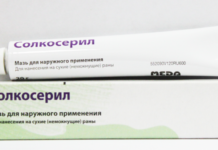Ozone (O3) is a blue gas, which is an allotropic modification of oxygen. In concentrations exceeding the maximum permissible (0.01 mg ∕ m3), it is toxic, has teratogenic, mutagenic and carcinogenic effects on the body. Despite this, gas is used for medical purposes, including through parenteral administration. Intravenous ozone therapy, the indications for use of which will be given below, is not a recognized therapeutic technique, but it is practiced in private medical organizations.
Material Content:
What is intravenous ozone therapy?
Ozone therapy is a method of intravenous administration of ozone in order to obtain the desired pharmacological effects. The working mixture can be created on the basis of physiological solution of sodium chloride (NaCl 0.9%) or the patient’s own blood. The enrichment of the base with O3 molecules is carried out using special devices - ozonizers. In this case, the resulting mixture remains stable for no more than half an hour. Therefore, solutions are prepared immediately before administration.
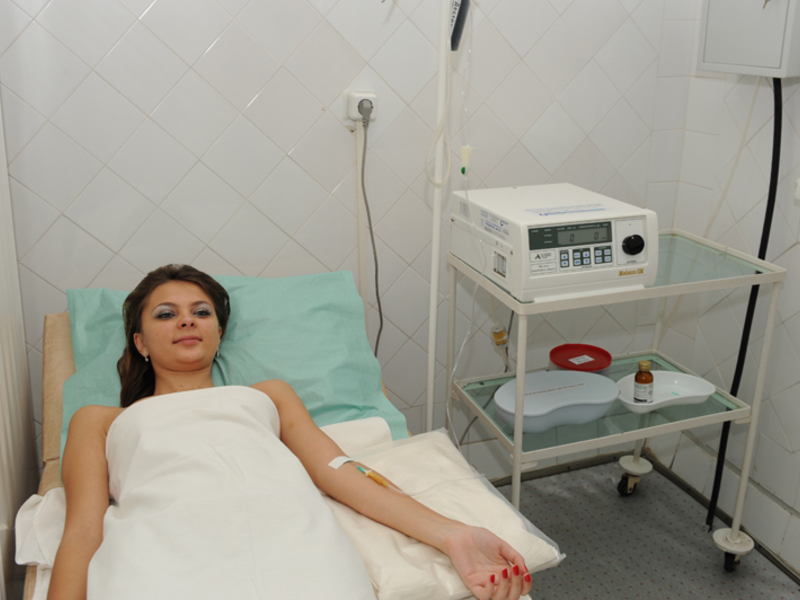
Once in the blood, the mixture breaks up, after which ozone begins to act on the cells of the body, forming short-chain molecular formations - ozonides. They have a stimulating effect on the formed elements of the blood, stimulate metabolic and energy processes. The basis of the solution remains in the bloodstream and does not have a pharmacological effect. Subsequently, it is excreted physiologically.
In addition to the above, ozone therapy can be used to close the surface vessels of the lower extremities with varicose veins.The procedure is the introduction into the vessel of microdoses of an oxygen-ozone mixture. A needle with a reduced clearance is used. The ingress of ozone into the vessel leads to its rapid expansion with subsequent gluing. Today, such methods of treating vascular pathology are practically not used, since their use is accompanied by a high risk of developing gas embolism and other complications associated with the entry of gas into the bloodstream.
Note: ozone therapy does not lead to the list of recognized medical manipulations and is not used in official medicine. The procedure can only be done in private clinics, after informing about the possible negative consequences of such treatment.
The use of ozone therapy. Who is shown to?
The list of indications for ozone therapy is quite extensive and includes diseases of almost all systems of the human body.
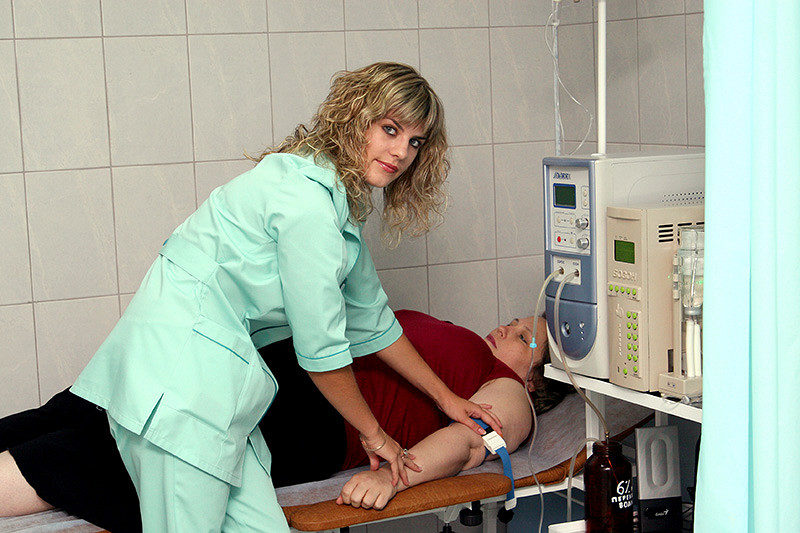
Among the diseases, according to ozone therapists treatable by this method, include:
- skin diseases (psoriasis, eczema, seborrhea, bullous dermatitis);
- vascular pathology (atherosclerosis, thrombosis, varicose vessels);
- gastrointestinal diseases (gastritis, ulcer, hepatitis);
- diseases of the urinary system (glomerulonephritis, pyelonephritis);
- inflammatory diseases (acute respiratory viral infections, influenza);
- wounds and ulcerations (burns, trophic ulcer, frostbite).
Speaking about how intravenous ozone therapy is useful, one cannot but note the tonic effect of blue gas. Ozone helps to restore health and increase overall tone in case of muscle hypotension, mental depression, depression. The tool helps to get rid of the feeling of chronic fatigue, stimulates mental abilities and increases the ability of a physical nature. The positive effect of gas becomes noticeable after the first procedures, however, the course of treatment should be taken to the end.
Benefit and harm
The procedure for intravenous ozone therapy, as mentioned above, has a large number of positive effects.
These include:
- anti-inflammatory effect;
- antitoxic effect;
- analgesic effect;
- bactericidal effect;
- immunostimulating effect.
All the effects of ozone therapy are complex, which allows it to be used to treat several diseases at the same time. This is especially true in cases when elderly patients find a whole list of diseases, the treatment of which by traditional medical methods will require taking several varieties of drugs daily.
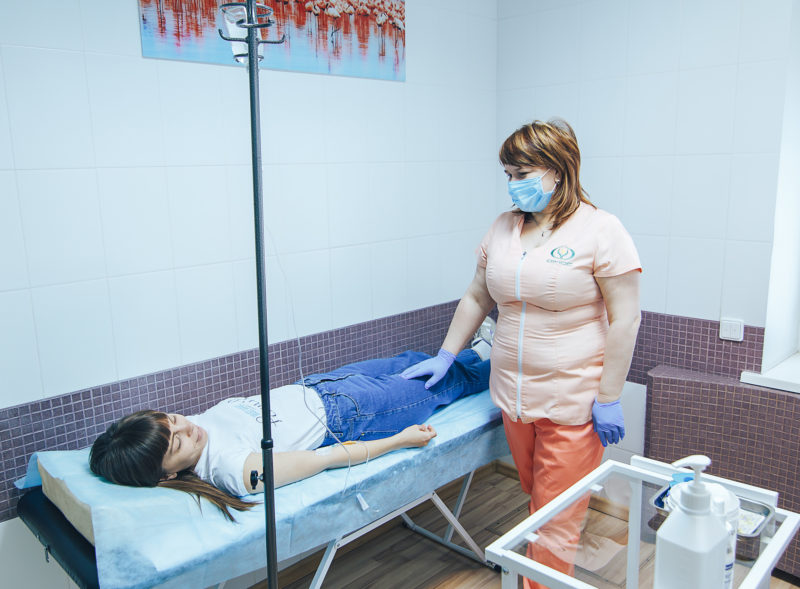
Ozone stimulates the production of biologically active substances, including serotonin, histamine, endorphins. This allows the use of funds based on it for the treatment of drug addiction. Stimulating the synthesis of the necessary components allows drug addicts to more easily survive the period of withdrawal when refusing the drug that caused the addiction. Similarly, ozone therapy can be used in the treatment of alcoholism and nicotine addiction.
Ozone therapy is also used to prevent certain diseases. Thus, the immunostimulating effect of gas prevents the development of infectious and inflammatory and oncological diseases, the antitoxic effect of triatomic oxygen is used to prevent chronic intoxications, intravenous ozone therapy during pregnancy can reduce gestosis symptoms, increase the level of maternal immune defense, and relieve pain from the lower back and knee joints.
Note: treatment of pregnant women with ozone-based preparations should be carried out only in cases where the benefit to the mother exceeds the possible harm to the fetus. The introduction of ozone should be done only after consultation with a gynecologist. Using this method without a thorough risk assessment can lead to fetal death.
With the right dose selection, ozone therapy does not cause noticeable harm to the patient's health. In some cases, the appearance of headaches, paresthesias and paraplegia. However, these side effects pass quickly enough without treatment. There is no information on the delayed effects of ozone therapy; no relevant studies have been conducted.
Ozone itself is a toxic substance that can have the following effects on the body:
- oncogenic - free radicals released during the reaction of ozone with other chemicals can provoke tumor growth;
- teratogenic - ozone affects the sex cells of a woman, damaging the chromosomes and leading to the appearance of malformations in the fetus.
It is believed that the negative effects of blue gas occur only if the dose is improperly selected or the toxicant is inhaled through the lungs in high concentrations. In reality, the harm of ozone therapy is not proven, as is its benefit.
How is the procedure
The ozone therapy procedure for the patient is practically no different from an ordinary dropper, with which most people suffering from chronic diseases are familiar. On the day of the manipulation it is recommended to take a light breakfast, stop smoking and drinking alcohol. No other preparatory measures are required.
The procedure itself is carried out in a clinical setting. In the doctor’s office there is an ozonizer apparatus, equipment necessary for the drip of solutions, a flask with sodium chloride, a kit for resuscitation and relief of allergic reactions. The preparation of the mixture is carried out immediately before its introduction. Otherwise, the effect will not be achieved. After preparing the solution, the doctor attaches the drip infusion system to the flask and connects it to the patient.
The system is connected in a sitting position. In this case, a venous tourniquet is placed on the arm, the elbow fold is treated with alcohol, and then the needle is inserted into the deep or superficial ulnar vein. If the test confirms that the needle is in a vein, it is fixed with a band-aid, after which the drug is infused.
The introduction of the ozone mixture takes about 15 minutes, during which 200-400 ml of the solution is administered to the patient. The dose depends on the individual characteristics of the patient and is selected by an ozone therapist. After the procedure, a person is recommended to sit for 20 minutes, then all restrictions are removed. Having undergone the ozone therapy procedure, the patient can drive cars, perform dangerous work and engage in any activity that requires increased attention.
How many sessions are needed?
The answer to the question of how many sessions are needed for the effect of ozone therapy intravenously depends on what disease the person is trying to treat. So, in cosmetology, the effect becomes noticeable after 2-5 infusions. At the same time, wrinkles are smoothed out, tissue tone increases. For weight loss, the infusion of ozone mixtures is carried out 15-20 times. Such a number of procedures is necessary for the "acceleration" of metabolism and the accelerated processing of incoming nutrients.
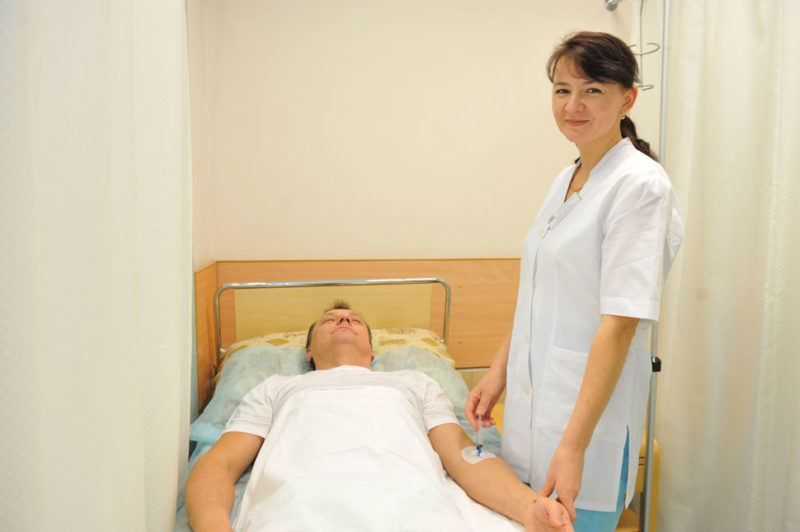
As for the direct treatment of diseases, it all depends on the severity of the patient's condition. In mild pathological processes, the benefit of administering ozone can become noticeable after the first session; in severe diseases, ozonation may not have a noticeable therapeutic effect.
Complications and negative consequences
Complications of ozone therapy develop mainly when using this method against the background of contraindications.
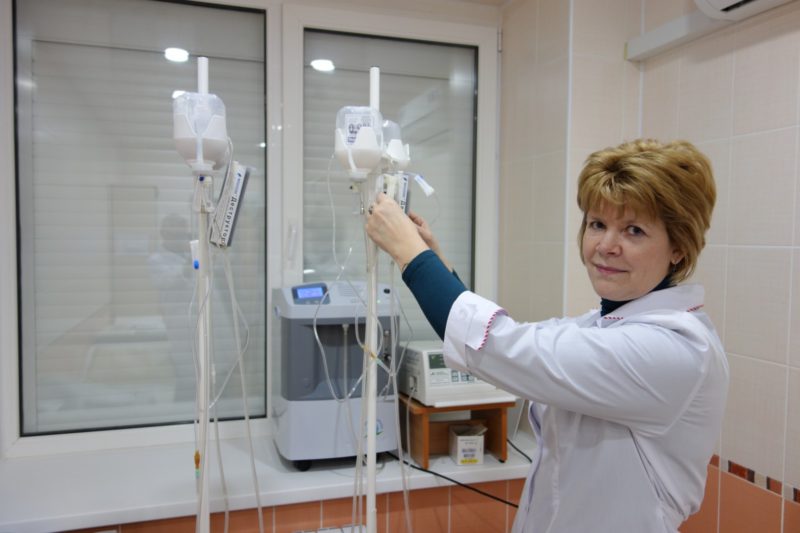
The latter include:
- heart diseases;
- pathology accompanied by convulsive syndrome;
- hyperthyroidism;
- organic damage to nerve trunks and the brain;
- any acute conditions requiring emergency medical attention;
- pathology of the blood coagulation system.
Attempts to treat ozone in the presence of pathology from this list lead to an exacerbation of diseases and a general deterioration of the patient's condition. In addition, intravenous ozonation can cause sluggish depression, increased bleeding, a sharp decrease in the number of blood cells (pancytopenia), and erythrocyte hemolysis.
Doctors reviews
During the treatment of diseases of various profiles using intravenous ozone, doctors managed to accumulate some experience using this method of therapy. Moreover, opinions on the effectiveness of the method and the need for its further application vary.
Ivan, 36 years old, general practitioner
I have been interested in ozone therapy for a long time, but I have not used this treatment method in practice. In order to prescribe to patients such a method as intravenous ozone therapy, contraindications should be evaluated very carefully, conducting many related examinations. This stopped me, because I did not want to do the extra work.
One patient forced me to decide on the appointment of ozone therapy, which I could not help with traditional medical methods. After a thorough examination, it was found that there are no contraindications to the introduction of ozone. After that, I sent the woman to a specialist in a private clinic.
Just a month later, I met her again. The changes were obvious. The patient underwent 4 ozone administration procedures, after which she noted a significant improvement. An ozone therapist recommended a short break between the procedures, but the patient was satisfied with the result. Conclusion - ozone therapy works, however, getting involved in this method is not recommended. It is not known how ozone molecules will affect the state of the body after some time.
Irina, 31 years old, ozone therapist
The use of ozone for the purpose of influencing the human body is not an innovation in the field of alternative medicine. Development in this direction has been ongoing since the 70s of the 20th century. Based on the experience of previous generations, as well as on my own developments and observations, I can safely say that ozone therapy is an effective and highly effective method of treatment.
Please note that ozone cannot be the only treatment for severe somatic diseases. Nevertheless, this is an auxiliary rather than a basic technique. Ozonation can be used as an independent method of exposure in cosmetology to improve the condition of skin cells, with the aim of losing weight on the background of physical education, and for the prevention of inflammatory diseases of the common cold origin.
Anton, 40 years old, general practitioner
More than once, patients who have experienced all the charms of alternative treatment methods, including ozone therapy, have come to me. Quite often, I have to deal with subcutaneous emphysema, hematomas, due to improper administration of the ozonizing mixture. During my work in the ambulance crew, I went out several times for cramps caused by ozone. It was not possible to save one such patient.
As for the direct benefits of intravenous ozone, I can say that it is not. Not a single patient who has undergone the procedure has noticed such a serious improvement to stop the therapy with conventional medications. Of course, a number of people who have resorted to the help of ozone therapists have experienced an improvement. However, this may well turn out to be a placebo effect based on the self-hypnosis of such patients.





